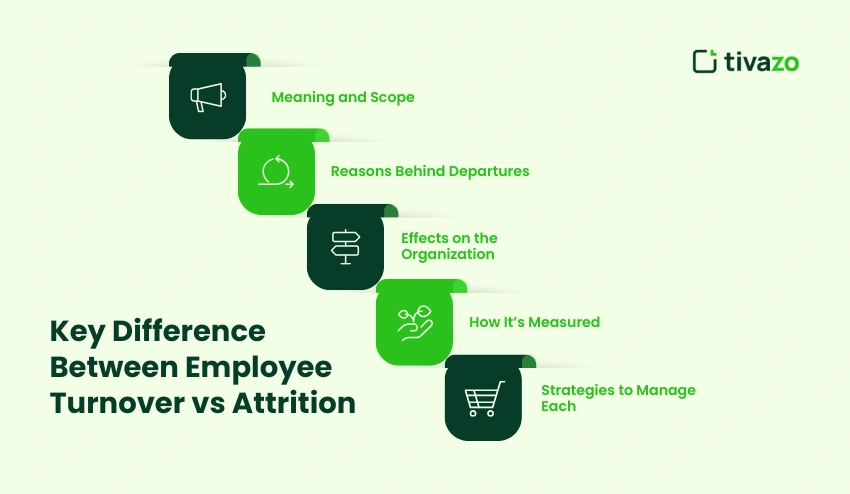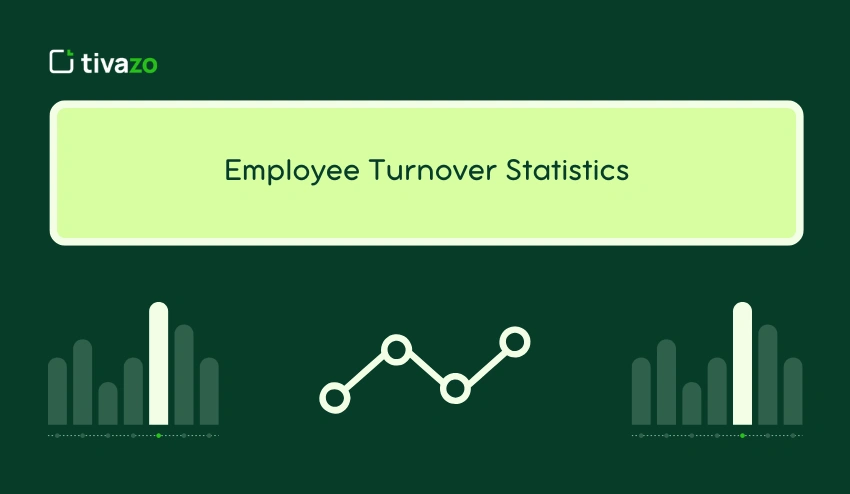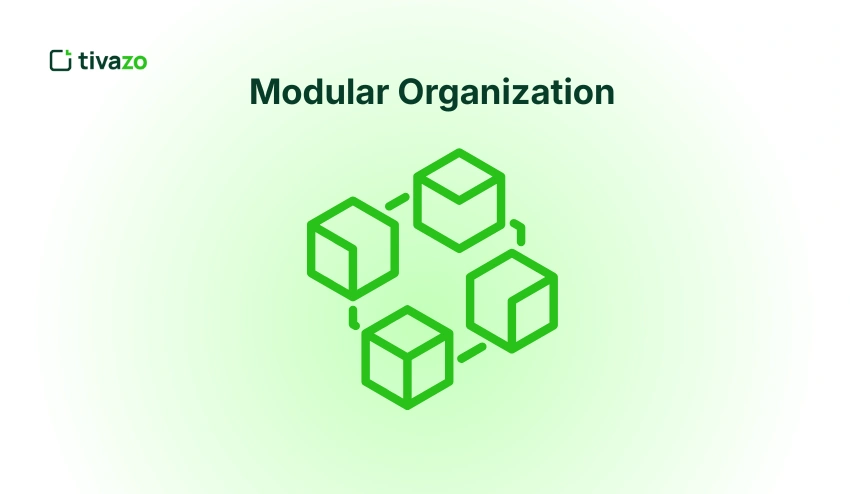The departure of employees may cause a dramatic effect on the productivity, culture, and bottom line of a company. However, employee turnover vs attrition are two terms that many organizations use interchangeably.
HR leaders and business managers should know the major distinctions between employee turnover vs attrition. Although they both entail employees quitting their jobs, turnover can be used to refer to the instances where the employee has to be replaced, and attrition can be used to refer to a natural decrease in the number of employees without the need to substitute them right away. The wrong interpretation of these metrics may result in ineffective retention activity and also unwarranted expenditure.
The modern competitive business environment requires that you be able to learn how to manage your workforce well. The ability to differentiate between employee turnover vs attrition will allow organizations to take specific retention measures, minimise hiring expenses, and retain a steady and motivated workforce. This guide will be divided into the differences, discuss the reasons why they exist, and provide practical tips you can use to maximize your HR strategy and retain employees interested and dedicated.
👉You May Also Like: How to reduce employee turnover and increase employee retention?
What is Turnover?
Employee turnover refers to the rate at which employees leave an organization and are replaced by new hires. It includes voluntary and involuntary separations that are either a resignation (voluntary) or termination (voluntary), or layoff (involuntary). High turnover may be an indicator of organizational difficulties, such as the lack of employee engagement, insufficient remuneration, or improper management habits.
Knowing the difference between employee turnover vs attrition is important to HR professionals and business leaders since such knowledge will enable them to differentiate between attrition that needs to be addressed by a replacement and attrition resulting from the natural workforce reduction. The high turnover rates may result in higher recruitment and training expenses, derail team dynamics, and loss of the organization’s knowledge.

What is Attrition?
The term attrition can be described as the gradual shrinking of the labour force in a company as a result of natural processes, including retirements, resignations, or even deaths, without any immediate replacement of the leaving employees. Contrasting employee turnover, attrition is usually a planned cost-reduction or downsizing measure, and not a responsive action.
Trend analysis of employee turnover vs attrition allows companies to adopt effective retention strategies, succession planning, and knowledge transfer programs. This makes sure that important skills are not lost, productivity is maintained, and the organization has a motivated, stable, and loyal working force.
Is employee turnover and attrition the same?
No, there is a difference between employee turnover vs attrition. Although both are characterized by the departure of employees from an organization, they are different in the cause, effect, and handling. Turnover encompasses things like resignations and terminations that necessitate the replacement of an employee, and attrition is a gradual decline in the workforce, but without a direct replacement, typically due to strategy or natural causes.
The research claimed that such measurements can be monitored and differentiated by an organization to enable it to employ specific measures to retain talent, plan succession, and minimize operational inefficiency. An understanding of such differences can help guarantee that a business does the right things to retain a healthy, productive, and engaged workforce.
👉You May Also Like: What Are The Top 10 Reasons For Employee Turnover in 2026
What does 80% attrition mean?
An 80% percent attrition rate refers to the fact that 80% percent of the workforce in a given company had exited the company within a given period of time without any successor. This is a very high turnover rate and shows a huge downsizing of the workforce, either because of natural factors such as resignations and retirements or because of strategic downsizing.
An 80% percent attrition rate can be very detrimental to the productivity of an organization, its morale, and its future stability. When evaluating employee turnover vs attrition, an attrition rate of 80% percent brings to the fore the alarming workforce problem that transcends the normal employee resignations. This can cause high attrition, leading to knowledge loss, disruption at work, and strain on the rest of the employees.
Through the differences in employee turnover vs attrition, the organizations will be able to determine whether the departures are as a result of voluntary exits, layoffs or as a result of the natural workforce reduction. It is important to ensure that the underlying problems are dealt with by means of succession planning, retention programmes, and workforce restructuring to stabilize the team and ensure business continuity in general.
5 Key Difference Between Employee Turnover vs Attrition

1. Meaning and Scope
Employee turnover can be defined as the rate at which employees quit an organization and are replaced voluntarily or involuntarily. Conversely, attrition refers to the gradual decrease in the labour force because of natural influences, i.e., retirements, resignations, or even deaths without prompt replacement.
Knowing the difference between employee turnover vs attrition aids the HR workers and corporate leaders in the proper measurement of labor mobility. Whereas turnover monitors all the leaves that would necessitate a replacement, attrition pays attention to the reductions that are not relevant to immediate staffing requirements, and then this may affect the strategic planning and cost management.
2. Reasons Behind Departures
Discontent with payments, absence of career advancement prospects, unfavorable organisational culture, or imprudent management are usually the factors that prompt employees to leave. The biggest contributors to turnover are voluntary resignations and terminations.
Attrition, on the other hand, takes place naturally as a result of retirements, personal choice of leaving the workforce, or other circumstances that cannot be avoided. By understanding these variations between employee turnover vs attrition, organizations are able to distinguish between the factors that can be controlled and therefore those that cannot be controlled in order to maintain a stable workforce.
3. Effects on the Organization
Employee turnover can upset the operations, reduce productivity, and raise the costs of recruitment and training. Depending on the loss of experienced employees can also result in loss of institutional knowledge and can adversely affect the morale of the teams.
When attrition is an intended and well-timed process, it may have less disruptive impact on the organization. Comparing employee turnover vs attrition assists organizations in balancing downsizing, reducing the operational impact, and employing attrition to manage costs progressively and restructure the organization gradually.
📖Related: 7 Best Ways For Supporting Employees In The Workplace
4. How It’s Measured
The formula for calculating the rate of employee turnover is usually applied in order to determine the percentage of employees who have exited this organization in the course of a given period. This measure will give an idea about voluntary and involuntary turnover.
On the other hand, attrition is quantified based on the rate of attrition, and it looks at natural workforce reductions without substitution. With the help of these metrics, comparing employee turnover vs attrition will enable organizations to construct an all-encompassing picture concerning employee movement and make informed HR decisions.
5. Strategies to Manage Each
In order to deal with employee turnover, companies have practiced employee engagement initiatives, competitive remuneration packages, efficient onboarding, and provided them with career growth opportunities in order to retain the best employees. Preventive action will minimise the turnover and the cost.
Attrition management practices encompass succession management, knowledge transfer initiatives, and workforce forecasting. Through the comparison of employee turnover vs attrition, the company can come up with specific measures to stabilize the workforce, retain the level of productivity, and enhance the general satisfaction and retention of the employees.
| Aspect | Employee Turnover | Attrition |
| Definition | Employees leave and are replaced | Employees leave without replacement |
| Causes | Voluntary and involuntary separations | Natural causes (retirement, resignation, death) |
| Impact | Can disrupt operations; may require recruitment | Gradual workforce reduction; cost-saving measure |
| Control | Often within organization’s control | Less controllable; influenced by external factors |
| Measurement | Turnover rate (percentage of employees leaving) | Attrition rate (percentage of workforce reduction) |
Turnover Rate Formula
The percentage of employees who quit an organization within a given period is calculated by the formula of the turnover rate. The basic formula is:
Turnover Rate Formula:
Turnover Rate (%) = (Number of Employees Who Left During Period ÷ Average Number of Employees During Period) × 100
If 15 employees left during the year and the average number of employees was 100:
Turnover Rate (%) = (15 ÷ 100) × 100 = 15%
You May Also Like: What Are the Pros and Cons of Outsourcing for Your Business?
Attrition Rate Formula
The attrition rate formula computes the rate of employees that an organization loses without their being replaced within a given time span. It assists the companies in monitoring the decrease in the natural workforce, e.g., retirements or voluntary resignations.
Attrition Rate Formula:
Attrition Rate (%) = (Number of Employees Leaving Without Replacement ÷ Average Number of Employees During Period) × 100
If 8 employees left without being replaced during the year, and the average number of employees was 100:
Attrition Rate (%) = (8 ÷ 100) × 100 = 8%
Employee Turnover vs Attrition Statistics
The modern state of employee turnover vs attrition is vital information that helps firms aspiring to enhance workforce stability and minimize the costs related to it. The following are the recent statistics:
Employee Turnover Statistics
- Overall U.S. Turnover Rate: The average voluntary turnover rate in the U.S. has decreased to 13.5% in 2023–2024, down from 17.3% in 2023 and 24.7% in 2022.
- Industry Variations:
- Retail and Wholesale: The highest turnover rate at 24.9%.
- Chemicals Industry: One of the lowest turnover rates at 9.1%.
- National Average: The national average employee turnover rate stands at 3.52% between February 2023 and February 2024.

Employee Attrition Insights
- Definition: Attrition refers to the gradual reduction of staff numbers due to voluntary resignations, retirements, or deaths, without immediate replacement.
- Strategic Use: Attrition is also a technique used by organizations to effectively control labor costs and by decreasing the number of workers to avoid the inefficiencies created by layoffs.
- Industry Example: The Indian IT-BPM sector has had considerably high cases of attrition with an estimated one million employees quitting their positions in 2021, and this has been mainly attributed to other factors such as the absence of career advancement and competitive remuneration packages offered by other firms.
Attrition vs Turnover vs Retention
| Aspect | Employee Turnover | Attrition | Retention | |
| Definition | The ability of an organization to keep employees over time | Gradual reduction of staff without replacement | Effective management, employee satisfaction, and engagement | |
| Causes | Voluntary resignations, layoffs, terminations | Retirements, resignations, natural reduction | Employee engagement programs, competitive pay, and training | |
| Impact on Organization | Can disrupt operations and increase recruitment costs | Gradual reduction in workforce; cost-saving measure | Improves productivity, morale, and reduces recruitment costs | |
| Measurement Metric | Turnover rate (%) | Attrition rate (%) | Retention rate (%) | |
| Management Strategy | Employee development, recognition programs, and career growth | Succession planning, knowledge transfer | Employee development, recognition programs, career growth |
Conclusion
The difference between employee turnover vs attrition is an important issue to understand in terms of a stable and productive workforce. Turnover measures the situations of departure that need to be replaced, and attrition measures the natural drops that do not need replacement. With the help of checking turnover rates, attrition rates, and retention strategies, organizations will be able to enhance employee engagement, workplace culture, and talent management. Such proactive interventions as career development and succession planning can minimise turnover and attrition, as well as cost-saving and performance maximisation. Are you willing to review the workforce and reinforce the retention strategies?




